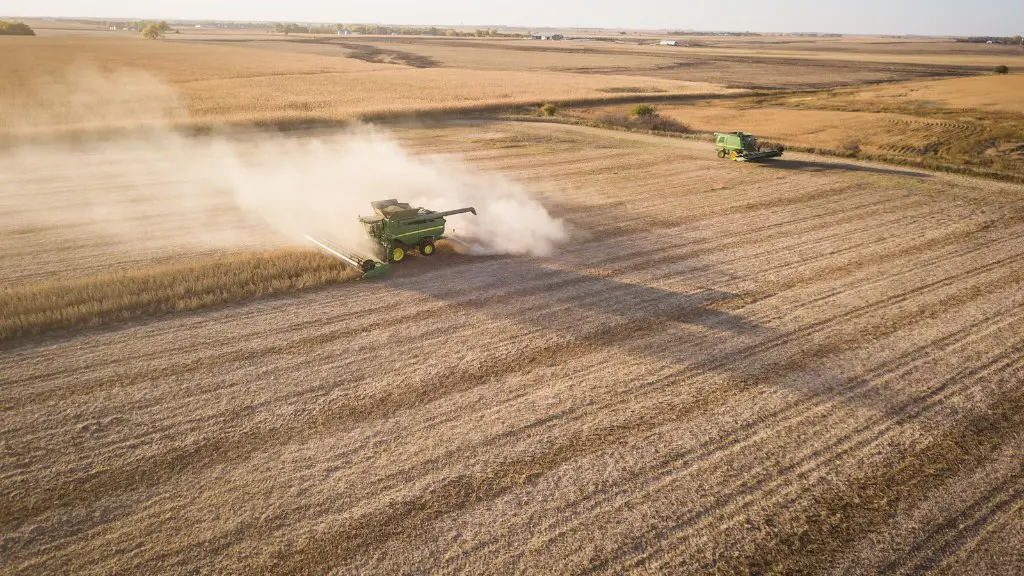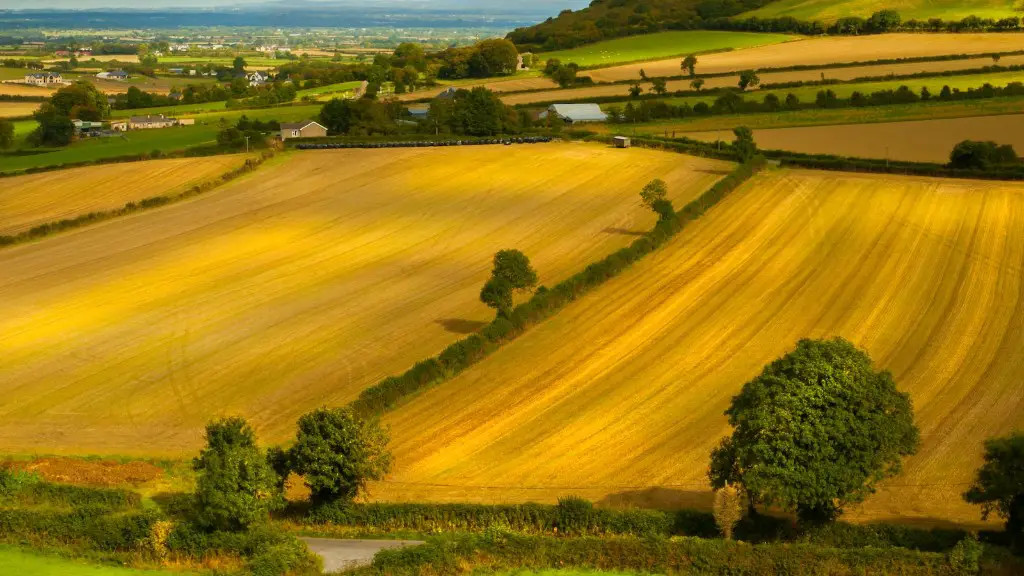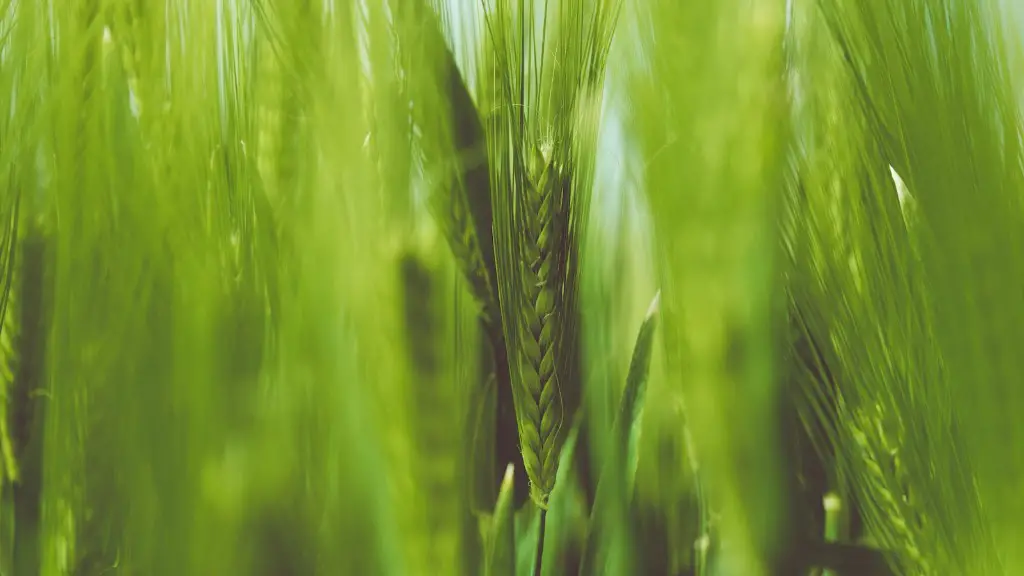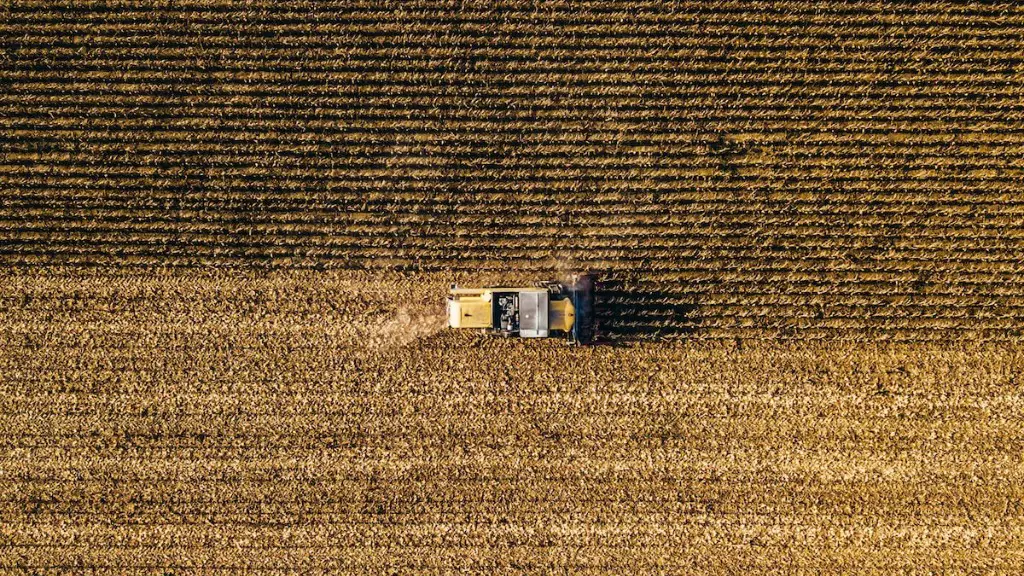In the early 1800s, food production in the United States was primarily done on small farms using traditional methods. This began to change when new technologies and ideas about farming began to emerge. One of the first major changes was the development of the steel plow. This new tool allowed farmers to plow through tougher soils, making it possible to farm in new areas. Around the same time, new methods for transporting goods were developed, making it easier to get crops to market. These and other innovations led to a shift towards large-scale, industrialized agriculture.
The first practical application of industrial agriculture was Jethro Tull’s seed drill in 1701, which significantly increased yields by planting crops in neat rows at the correct depth and distance apart. The British Agricultural Revolution began around 1750 and greatly increased the efficiency of farming, leading to a significant increase in food production. The population of Britain rose rapidly during the 1800s, leading to a demand for even more food. The introduction of steam-powered threshing machines and reapers in the early 1800s increased the productivity of farms even further.
Why did industrial agriculture start?
Modern industrial agriculture is a culmination of social and technological processes beginning in the 1800s that sought to increase yields of agriculture for growing human populations by applying fossil fuel energy, mechanization, and advanced crop breeding methods. While these processes have increased yields and helped to feed growing populations, they have also had negative impacts on the environment, including increased greenhouse gas emissions, soil degradation, and water pollution.
Industrial agriculture is a type of farming that relies on synthetic chemical inputs to boost productivity and mechanization of manual processes. This type of agriculture is typically used to maximize food production.
How did agriculture start the Industrial Revolution
The Second Agricultural Revolution saw a dramatic increase in crop yields, thanks to the introduction of new technologies and farming methods. This allowed for the formation of larger cities and paved the way for the First Industrial Revolution.
The Agricultural Revolution was a period of increased agricultural productivity that occurred prior to the Industrial Revolution. The Agricultural Revolution has been cited as a cause of the Industrial Revolution, as the rise in productivity accelerated the decline of the agricultural share of the labor force, adding to the urban workforce on which industrialization depended.
Where did industrial agriculture start?
Industrial agriculture got an early start in the United States. In order to avoid the laborious task of manuring soils to supply nutrients, inorganic fertilizers, such as superphosphates, came into use as early as the 1840s. This allowed farmers to more easily and quickly supply the nutrients that their crops needed, without having to put in the extra work of manual soil preparation. This system of agriculture quickly spread across the country, and the United States became known for its large-scale, efficient farms.
Industrial agriculture is a large-scale, intensive production of crops and animals, often involving chemical fertilizers on crops or the routine, harmful use of antibiotics in animals (as a way to compensate for filthy conditions, even when the animals are not sick). This type of agriculture has a significant impact on the environment, as it often involves the use of harmful chemicals and can lead to pollution and soil erosion. Additionally, industrial agriculture can be detrimental to the health of both animals and humans, as the conditions in which animals are raised can be unsanitary and inhumane, and the routine use of antibiotics can lead to the development of antibiotic-resistant bacteria.
What is the importance of industrialized agriculture?
There are many benefits of industrial agriculture. The main advantage is its increased performance when higher yields are harvested from smaller territories. This brings economic benefits to landowners and provides food for the growing population. Additionally, industrial agriculture helps to ensure food security by providing a reliable and consistent food supply. It also helps to promote economic development by providing employment opportunities and increasing trade.
The Agricultural Revolution saw a massive increase in agricultural production in Britain, thanks to increases in labor and land productivity. This period saw a huge growth in the population, as well as a boom in the economy. The Agricultural Revolution was a key factor in making Britain the world’s leading industrial power.
What factors contributed to the agricultural and industrial revolutions
The Agricultural Revolution was a time of change and innovation in the way that crops were grown and animals were raised. This led to new methods, such as crop rotation, and the abundant use of natural resources, such as water and coal. The political stability of the time, with no wars or debt, also made it possible for entrepreneurs to build factories and for the railroad to boom. These factors of production – land, labor, and capital – made the textile industry advances possible.
The Industrial Revolution was a time of great change for Britain and the rest of the world. It brought about new techniques in manufacturing and production, and new ways of thinking about work, labor, and economics.
One of the most important factors in the Industrial Revolution was the rise of capitalism. Capitalism is an economic system in which private individuals and businesses own the means of production, and they are motivated by profit.
In the early days of the Industrial Revolution, Britain was the only country with a capitalist economy. This meant that there were a lot of wealthy entrepreneurs who were willing to invest in new technologies and factory production.
The combination of capitalism and new technologies led to the rapid growth of industry, and the Industrial Revolution began.
What are 5 reasons the Industrial Revolution began?
Without the industrialization of Britain, the world would be a very different place today. The Industrial Revolution brought about new technologies, new materials, and new ways of manufacturing goods and performing services. It also spurred economic growth and increased the standard of living for many people. Britain was at the forefront of this revolution, and its impact can still be felt around the world today.
The agricultural revolution was caused by the need to feed the quickly growing population. English aristocracy contributed land to be rented, which caused the peasants to revolt, because the land they used for farming and grazing was being rented out to other farmers. This led to the development of new farming techniques and the rise of the bourgeoisie.
Where did agriculture first begin and when
The Zagros Mountain range, which lies at the border between Iran and Iraq, was home to some of the world’s earliest farmers. Sometime around 12,000 years ago, our hunter-gatherer ancestors began trying their hand at farming. They brought with them new technologies, like irrigation and crop rotation, which allowed them to support larger populations. Today, the Zagros Mountains are still home to many farmers, who continue to practice these traditional methods.
The United States experienced a mass transition from an agricultural to an industrial economy in the late 1700s through the early 1800s. This lengthy process was fueled by a number of factors, including population growth, technological advancements, and the opening of new markets. The result was a more diversified and productive economy that laid the foundation for America’s continued prosperity.
Where did the Industrial Revolution begin and in what industry did it start?
The Industrial Revolution began in Great Britain around 1760. Many of the technological innovations were of British origin, and textile production was the first industry to use these modern methods. The British textile industry dominated the early days of the Industrial Revolution, and its success spurred on other industries to adopt similar methods of production. The result was a period of unprecedented economic growth and prosperity.
The industrialization of agriculture has led to a number of serious environmental problems. Agricultural emissions are a major contributor to climate change, and industrial agriculture is also a major source of water and air pollution. In addition, the overuse of antibiotics and pesticides in agriculture has led to the development of antibiotic-resistant and pesticide-tolerant strains of bacteria and other pests. These problems have serious implications for public health and the environment, and they underscore the need for more sustainable agriculture practices.
What’s one of the largest impacts of industrial agriculture
Agricultural contaminants, including pesticides, nitrates, and phosphorus, can impact ground and surface water quality, affecting both urban and rural communities. Synthetic fertilizers can deplete soil health and require intensive use of fossil fuels to produce.
The sustained growth of non-agricultural employment and the transfer of part of the rural labour force to the towns have made it possible to stabilize the number of agricultural workers and halt the growth of population pressure on the land, thus creating the conditions for improved labour productivity and peasant incomes. This has been a key factor in the rural areas’ overall economic development.
Final Words
The rise of industrialized agriculture was spurred by a number of factors, chief among them being population growth and the need for increased food production. With more mouths to feed, traditional methods of farming simply could not keep up with demand. This led to the adoption of new technologies and methods that increased efficiency and output. Additionally, the industrial revolution played a role in the development of industrialized agriculture, as new machines and technologies were invented that could be put to use in the agricultural sector.
Industrialized agriculture began in response to the needs of a rapidly growing population. With the industrial revolution came new technologies that allowed for more efficient production of food. This new way of agriculture soon spread around the world, resulting in higher food production and higher standards of living for many people.





